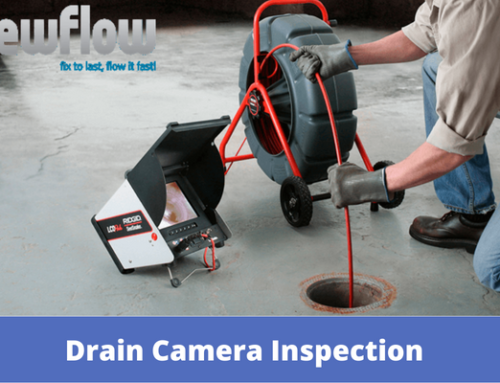Trenchless sewer repair pros and cons include less digging, faster completion, and long-lasting results but also higher upfront costs and some job limitations. This modern method repairs underground sewer lines with minimal surface damage, which makes it attractive for homeowners who want to avoid tearing up their yards.
Traditional sewer repair often requires extensive excavation and costly restoration of driveways, landscaping, or sidewalks. Trenchless repair offers a cleaner, faster alternative while still providing durable results. However, it is not the best option in every situation, and understanding both sides is key before making a decision.
In this guide, we explain the main advantages and disadvantages, compare costs, and outline when trenchless repair is the right choice for your property.
Table of Content:
What Is Trenchless Sewer Repair?
Trenchless sewer repair is a modern technique that fixes damaged underground pipes without digging a long, open trench. Instead, professionals use specialized equipment to repair or replace the pipe from small access points.
There are two common types:
- Pipe bursting – A machine pulls a new pipe through the old one, breaking apart the damaged pipe as it goes.
- Pipe lining (Cured-In-Place Pipe or CIPP) – A resin-coated liner is inserted into the old pipe, inflated, and hardened to create a new pipe inside the existing one.
Both methods reduce the need for heavy excavation, making them more appealing for homeowners who want to avoid major disruption.
The Main Pros of Trenchless Sewer Repair
1. Less Disruption to Your Property
One of the biggest benefits is the minimal digging involved. Instead of tearing up lawns, trees, patios, or driveways, only small access holes are needed. For many homeowners, this is a huge relief—your yard stays intact, and you avoid the expensive landscaping repairs that follow traditional digging.
2. Faster Completion Time
Traditional sewer repair can take days or even weeks, depending on the damage and weather. Trenchless methods are usually completed in just one to three days. Faster repairs mean less stress and a quicker return to normal life.
3. Long-Lasting Results
Many trenchless repairs, especially pipe lining, come with lifespans of 50 years or more. This is equal to or even better than traditional pipe replacement. With high-quality materials like epoxy resin or HDPE piping, durability is a strong selling point.
4. Lower Restoration Costs
Even if trenchless repair costs more upfront, you save money by avoiding extra expenses like replacing driveways, repairing landscaping, or re-pouring sidewalks. In many cases, these restoration savings balance out the higher initial price.
5. Eco-Friendly Option
Since there’s less digging, trenchless repair causes less soil disruption, reduces waste, and prevents damage to surrounding trees and vegetation. Many environmentally conscious homeowners prefer this method.
The Cons of Trenchless Sewer Repair
1. Higher Upfront Cost
While the long-term savings are clear, the initial cost of trenchless repair is typically higher than traditional digging. Depending on location, size of the job, and condition of the pipes, trenchless methods can cost 20–30% more upfront.
2. Not Suitable for Every Situation
If your pipes have collapsed completely or if soil conditions are unstable, trenchless methods may not work. Severe structural damage sometimes requires traditional excavation.
3. Limited Contractor Availability
Not all plumbing companies have the training or equipment for trenchless repair. In some areas, you may struggle to find an experienced contractor, which limits your options.
4. Access Requirements
While trenchless repair needs less digging, it still requires proper access points. If there are no convenient entry points, the process can become complicated or impossible.
Cost of Trenchless Sewer Repair vs Traditional Digging
The cost of trenchless sewer repair depends on factors like pipe length, soil condition, and method used. On average:
- Traditional sewer repair: $50–$250 per foot
- Trenchless sewer repair: $60–$300 per foot
At first glance, trenchless looks more expensive. But consider the hidden costs of traditional digging:
- Replacing concrete driveways: $3,000–$8,000
- Restoring landscaping: $1,500–$5,000
- Repairing sidewalks, fences, or patios: $1,000–$4,000
When you add these restoration costs, trenchless often becomes the more cost-effective choice in the long run.
Trenchless Sewer Repair Longevity and Reliability
A common question homeowners ask is: “How long does trenchless sewer repair last?”
- Pipe lining (CIPP): Typically 40–50 years.
- Pipe bursting with HDPE pipes: 50–100 years in many cases.
These lifespans are similar to or better than traditional methods, meaning you won’t sacrifice durability by choosing trenchless.
Situations Where Trenchless Sewer Repair Works Best
- Tree root intrusions – Lining seals the pipe and prevents future root growth inside.
- Minor cracks or leaks – Ideal for restoring structural integrity.
- Pipes under driveways, sidewalks, or buildings – Saves you from expensive surface demolition.
- Urban neighborhoods with limited yard space – Minimizes disruption and noise.
When Traditional Digging Is Still Necessary
Even though trenchless technology is impressive, it’s not always the right solution. Traditional excavation may still be required when:
- Pipes are completely collapsed or crushed.
- Access points are not available.
- The pipe slope is incorrect and needs re-grading.
- Soil conditions make trenchless methods unsafe.
Knowing these limitations helps set realistic expectations and prevents surprises during inspection.
Comparing User Experience: Trenchless vs Traditional
| Factor | Trenchless Repair | Traditional Digging |
|---|---|---|
| Property Damage | Minimal, only small holes | Major—lawns, driveways, landscaping |
| Completion Time | 1–3 days | 1–3 weeks |
| Cost | Higher upfront, fewer restoration costs | Lower upfront, but expensive repairs |
| Durability | 40–100 years | 30–60 years |
| Environmental Impact | Low disturbance | High disturbance |
Benefits for Homeowners
Choosing trenchless sewer repair often means:
- Avoiding the stress of a torn-up yard.
- Faster return to normal life.
- Long-term durability and peace of mind.
- Potentially lower total cost when restoration is considered.
- A greener, less disruptive option for your property.
Final Verdict: Is Trenchless Sewer Repair Worth It?
The answer depends on your situation. If your pipes are accessible and not completely collapsed, trenchless sewer repair is usually the smarter choice. The benefits—less mess, faster repair, long-lasting results, and lower overall costs—outweigh the drawbacks for most homeowners.
However, if your pipes are severely damaged, if costs are a major concern, or if trenchless isn’t available in your area, traditional digging may still be necessary.

Arman Grigoryan
Founder & President of New Flow Pumbing
Arman Grigoryan is the founder and president of New Flow Plumbing, proudly serving Los Angeles, Sacramento, and surrounding areas. With extensive experience in plumbing diagnostics, he leads a skilled team specializing in advanced sewer and drain camera inspections to quickly identify problems and deliver lasting solutions. Arman is dedicated to using the latest technology to provide reliable service, honest answers, and dependable results for every customer.





